Teflon vs. Ceramic Cookware: Essential Guide
Confused by cookware choices? Teflon coatings offer superior non-stick properties and are budget-friendly, while ceramic coatings are eco-friendlier and heat-resistant. Both have pros and cons, but understanding their differences will help you pick the perfect pans for your kitchen, ensuring delicious meals and easy cleanup every time.
Welcome to the heart of your kitchen – where delicious creations come to life! It’s easy to feel overwhelmed when standing in front of a wall of shiny pots and pans. You want cookware that makes cooking a joy, not a chore, and that looks great on your stovetop. If you’re wondering about the best non-stick options, you’ve likely encountered two popular choices: Teflon and ceramic. They both promise that magical slide-off-the-pan experience, but how do they really stack up? Don’t worry, we’ll break it down simply so you can confidently choose the best set for your home and your cooking adventures.
Why Your Cookware Choice Matters
Choosing the right cookware is more than just picking pretty pots. It directly impacts how your food cooks, how easy cleanup is, and even your well-being. Ever struggled to flip a pancake without it tearing? Or spent ages scrubbing stubborn residue? That’s where the right non-stick surface comes in. It can transform your cooking experience from frustrating to fun! We’ll explore the two top contenders, Teflon and ceramic, to help you make an informed decision that brings ease and style to your kitchen.

Understanding Teflon Cookware
Teflon, scientifically known as polytetrafluoroethylene (PTFE), has been a kitchen staple for decades. It’s famous for its incredibly slippery surface, which makes cooking and cleaning a breeze. When PTFE is heated and bonded to a metal surface like aluminum or stainless steel, it creates a durable, non-stick layer.
How Teflon Works
The magic behind Teflon’s non-stick power lies in its chemical structure. PTFE is a fluoropolymer with a unique molecular chain that has very low surface energy. This means that food molecules find it very difficult to adhere to the pan’s surface. Think of it like water on a freshly waxed car – it beads up and rolls off easily. This low friction is what allows food to glide around the pan, preventing sticking and burning.
Pros of Teflon Cookware
- Excellent Non-Stick Performance: This is Teflon’s biggest selling point. Food rarely sticks, making it ideal for delicate items like eggs and fish.
- Affordability: Teflon pans are generally less expensive than many ceramic options, making them a budget-friendly choice.
- Lightweight: Many Teflon pans are made with lightweight aluminum, making them easy to handle and maneuver.
- Easy to Clean: Most food residue wipes away with minimal effort, often just needing a soft sponge and warm soapy water.
Cons of Teflon Cookware
- Durability Concerns: The non-stick coating can scratch or chip over time, especially if metal utensils are used or if the pans are cleaned aggressively.
- Temperature Sensitivity: High heat can damage the Teflon coating and potentially release fumes. It’s usually recommended to avoid temperatures above 500°F (260°C) for most PTFE-based cookware.
- Potential Health Concerns: Older Teflon pans, or those that have been overheated and degraded, could potentially release PFOA (perfluorooctanoic acid) or other harmful chemicals, although PFOA has been largely phased out of most modern manufacturing processes. For more on cookware safety, the U.S. Food and Drug Administration (FDA) offers guidelines and information on food contact substances.
- Not Metal Utensil Safe: To preserve the coating, you generally need to use wood, silicone, or plastic utensils.
Understanding Ceramic Cookware
Ceramic cookware is a more recent popular choice, often lauded for its natural, eco-friendly appeal. Unlike Teflon, ceramic coatings are typically made from a sol-gel process using silicon and oxygen derivatives, creating a hard, glassy surface. It’s often advertised as a greener alternative.
How Ceramic Cookware Works
Ceramic coatings work by creating a smooth, dense barrier on the metal pan. While not as inherently slippery as Teflon at a molecular level, the tightly bound particles of the ceramic surface make it difficult for food to penetrate and stick. The non-stick properties are often achieved by infusing the ceramic layer with a high-oil or organic component during the manufacturing process, which creates tiny pores that prevent food from adhering. Some ceramic cookware also utilizes nanotechnology, creating an extremely smooth surface.
Pros of Ceramic Cookware
- Non-Toxic and Eco-Friendly: Most ceramic cookware is free from PTFE, PFOA, lead, and cadmium, making it a healthier and more environmentally conscious option.
- Good Heat Distribution: Many ceramic pans are constructed with aluminum bases, which provide excellent and even heat distribution, leading to consistent cooking results.
- Scratch Resistance (Varies): High-quality ceramic coatings can be quite durable and resistant to scratches compared to standard Teflon if cared for properly.
- Aesthetically Pleasing: Ceramic cookware often comes in a variety of attractive colors and finishes, adding a stylish touch to any kitchen.
- Dishwasher Safe (Often): Many ceramic pans are designed to be dishwasher safe, though handwashing is always recommended to prolong their lifespan.
Cons of Ceramic Cookware
- Non-Stick Properties Degrade: The non-stick quality of ceramic pans can diminish over time, especially compared to high-quality Teflon.
- Can Be Less Durable Than Expected: While some ceramic finishes are robust, others can chip or be damaged by thermal shock (rapid temperature changes) or harsh cleaning.
- Generally More Expensive: Ceramic cookware can often come with a higher price tag than comparable Teflon pans.
- Not Always Oven Safe: Check manufacturer instructions, as many ceramic pans are not designed for oven use.
- Can Require Special Care: Some ceramic surfaces benefit from specific cleaning methods to maintain their longevity and non-stick capabilities.
Teflon vs. Ceramic: A Direct Comparison
Let’s lay it all out in a simple comparison to help you see the key differences at a glance. This table focuses on the most important factors for everyday cooking and kitchen management.
| Feature | Teflon (PTFE) Cookware | Ceramic Cookware |
|---|---|---|
| Non-Stick Performance | Excellent, superior at release | Good to very good, can degrade over time |
| Durability | Can scratch/chip easily, especially with improper use | Varies; can be scratch-resistant but prone to chipping or coating wear |
| Heat Tolerance | Moderate; avoid high heat (above 500°F/260°C) to prevent fumes | Generally good heat distribution, often oven safe to moderate temperatures (check specifics) |
| Health & Safety | PFOA-free in modern products. Overheating can release fumes. Look for FDA-approved materials. | Typically free from PTFE, PFOA, lead, and cadmium. Considered more naturally non-toxic. |
| Maintenance | Easy to clean, but requires non-metal utensils. Handwashing recommended. | Easy to clean, but some types benefit from special care. Dishwasher safe (check label). |
| Price | Generally more affordable | Can be more expensive |
| Eco-Friendliness | Less eco-friendly manufacturing processes | Often considered more eco-friendly due to natural materials |
Key Factors to Consider When Choosing
Now that you know the basics, let’s think about what really matters for your kitchen. It’s all about matching the cookware to how you like to cook and what you value most.
1. Your Cooking Habits
Are you an everyday cook who loves making eggs, pancakes, and stir-fries? Or do you occasionally try more elaborate meals? If easy release and everyday non-stick is your top priority, a good quality Teflon pan might be your best bet. If you’re concerned about very high heat cooking or prefer a more natural surface, ceramic could be ideal, but be aware you might need to adjust your cooking technique slightly to maintain its non-stick qualities.
2. Durability and Longevity
How long do you expect your cookware to last? High-quality Teflon pans can last for years if properly cared for. Ceramic durability can vary widely by brand and construction. If you’re looking for pans that can withstand daily use with minimal fuss and you’re committed to gentle cleaning and utensil habits, both can work well.
3. Health and Safety Preferences
For many, avoiding potentially harmful chemicals is a major concern. Modern Teflon cookware is PFOA-free, but if you prefer to completely steer clear of synthetic coatings or worry about accidental overheating, ceramic offers a reassuring alternative. It’s always wise to research brands and look for certifications. The U.S. Environmental Protection Agency (EPA) has resources on chemical safety which can be helpful for understanding materials used in cookware.
4. Budget
Let’s be realistic – budget plays a role! Teflon cookware generally offers more bang for your buck, especially for starter sets. If you’re on a tighter budget but still want reliable non-stick performance, Teflon is often the more accessible option. High-end ceramic cookware can be an investment, but it might offer a stylish and healthy alternative.
5. Ease of Maintenance
How much effort are you willing to put into cleaning and caring for your pans? Both Teflon and ceramic are generally easy to wipe clean. However, Teflon pans absolutely require careful use of utensils and avoid high heat. Many ceramic pans are dishwasher safe, but handwashing is often recommended for both types to maximize their lifespan and non-stick performance.
Tips for Extending the Life of Your Cookware
No matter which type you choose, a little TLC goes a long way! Here are some easy tips to keep your Teflon and ceramic pans performing beautifully for years to come.
For Both Teflon and Ceramic:
- Handwash Whenever Possible: Even if advertised as dishwasher safe, handwashing with a soft sponge and mild dish soap will preserve the coating longer.
- Use the Right Utensils: Stick to wood, silicone, or nylon utensils. Avoid metal.
- Avoid Extreme Temperature Changes: Don’t plunge a hot pan into cold water. Let it cool slightly first.
- Don’t Use Abrasive Cleaners: Steel wool or harsh scrubbers can damage the non-stick surface.
Specific to Teflon:
- Avoid High Heat: Never preheat an empty Teflon pan on high heat. Use medium heat for most cooking.
- Don’t Use Cooking Sprays: Aerosol cooking sprays can build up on the surface and damage the non-stick quality over time. Lightly oil or butter instead.
Specific to Ceramic:
- Be Mindful of Thermal Shock: Avoid sudden drastic temperature changes. Let it cool down a bit before washing.
- Seasoning (Sometimes): Check manufacturer instructions. Some ceramic coatings may benefit from a light “seasoning” process using a bit of oil when new or after deep cleaning.
Making the Final Decision: Which is Right for You?
Choosing between Teflon and ceramic cookware isn’t about one being definitively “better” than the other; it’s about what aligns best with your personal cooking style, health priorities, and budget. Think of it as finding the perfect assistant for your culinary adventures!
Choose Teflon if:
- Your absolute top priority is a superior, effortless non-stick surface for everyday cooking.
- You’re on a budget and looking for affordable, reliable non-stick pans.
- You’re diligent about using the correct utensils (non-metal) and avoiding overheating.
- You want lightweight pans that are easy to handle.
Choose Ceramic if:
- You prioritize a naturally non-toxic cooking surface and want to avoid PTFE coatings.
- You value eco-friendly materials and manufacturing processes.
- You appreciate a stylish aesthetic in your kitchenware.
- You’re willing to invest a bit more for a potentially healthier option and understand that its non-stick properties might require a bit more care over time.
Many home cooks find that having a mix of cookware is ideal. Perhaps a durable stainless steel sauté pan for searing, a high-quality Teflon skillet for eggs, and a ceramic saucepan for sauces.
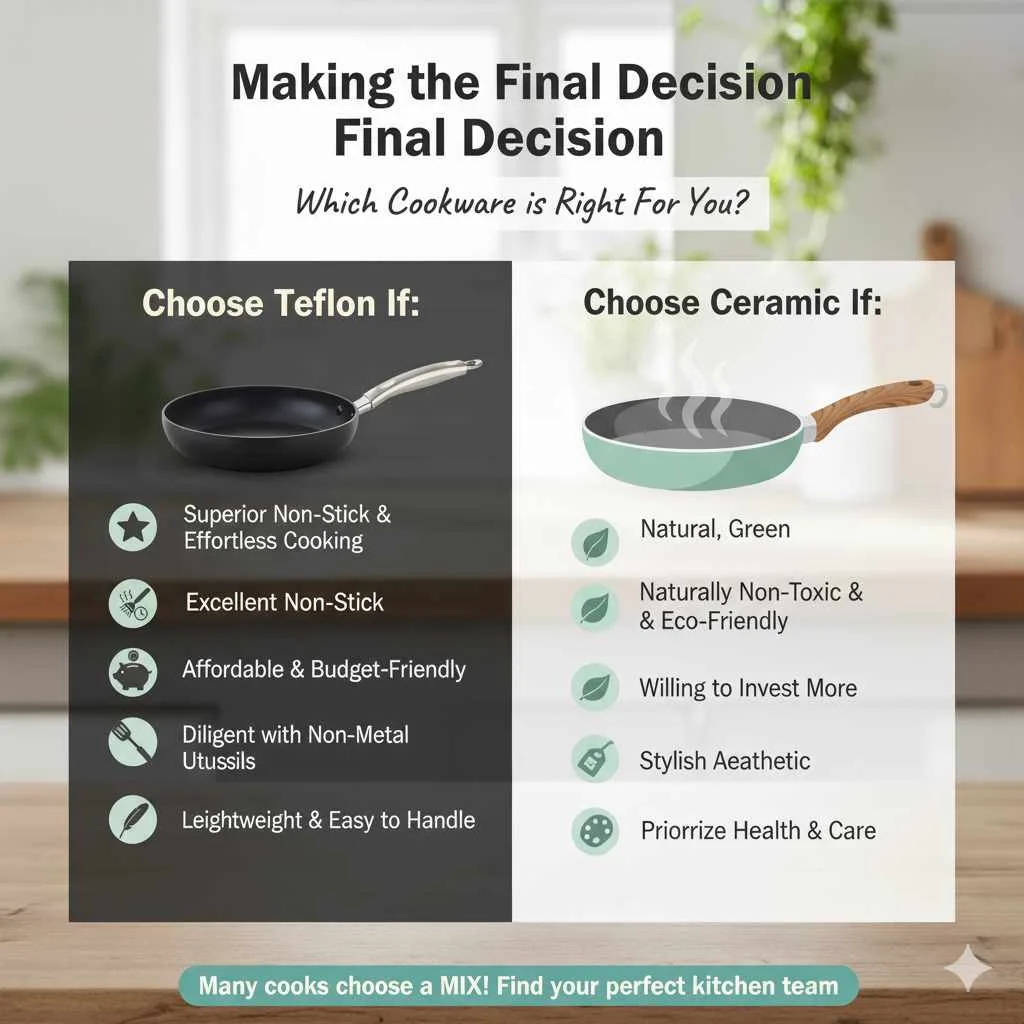
Frequently Asked Questions About Teflon vs. Ceramic Cookware
Q1: Are modern Teflon pans safe to use?
Yes, modern Teflon (PTFE) cookware manufactured today is generally considered safe when used as directed. Manufacturers have phased out PFOA (perfluorooctanoic acid), a chemical that was previously controversial. Just avoid overheating your pans (above 500°F or 260°C) and using abrasive cleaning methods or metal utensils, which can damage the coating and potentially release fumes.
Q2: Do ceramic pans lose their non-stick ability quickly?
The longevity of a ceramic pan’s non-stick properties can vary by brand and how it’s cared for. While they start with excellent non-stick capabilities, they can degrade over time, especially with harsh cleaning or frequent exposure to very high heat. Proper care, like handwashing and using non-metal utensils, helps extend this performance.
Q3: Can I use metal utensils on ceramic cookware?
It’s generally not recommended to use metal utensils on ceramic cookware, as they can scratch and damage the non-stick coating, reducing its effectiveness and lifespan. Opt for silicone, wood, or nylon utensils to keep your ceramic pans in top condition.
Q4: Which is better for high-heat cooking, Teflon or ceramic?
Neither Teflon nor ceramic is ideal for very high-heat searing, compared to materials like cast iron or stainless steel. Teflon should not be heated above 500°F (260°C) to avoid coating degradation and fumes. Ceramic pans can generally withstand moderate oven temperatures, but their non-stick surfaces can also be compromised by extreme heat over time. For high-heat applications, consider other cookware materials.
Q5: Is ceramic cookware actually made of ceramic?
Ceramic cookware typically refers to a non-stick coating applied to a metal base (like aluminum or stainless steel). The coating itself is made from a sol-gel process, using silicon and oxygen, which creates a hard, glass-like surface. It’s not solid ceramic but rather a ceramic-based coating.
Q6: Which type of cookware is easier to clean?
Both Teflon and ceramic cookware are designed for easy cleaning. Food tends to slide off, making them simple to wipe down with a sponge and warm, soapy water. They are often dishwasher safe, though handwashing is always the gentlest method for preserving their non-stick qualities.
Your Kitchen, Your Choice!
Choosing your next set of pots and pans shouldn’t be a headache! Whether you lean towards the proven non-stick power of Teflon or the natural, eco-friendly appeal of ceramic, the most important thing is that your new cookware helps you create delicious food with less stress and more joy. By understanding the differences, weighing the pros and cons against your personal needs, and following a few simple care tips, you can confidently select cookware that will be a wonderful addition to your kitchen for years to come. Happy cooking!

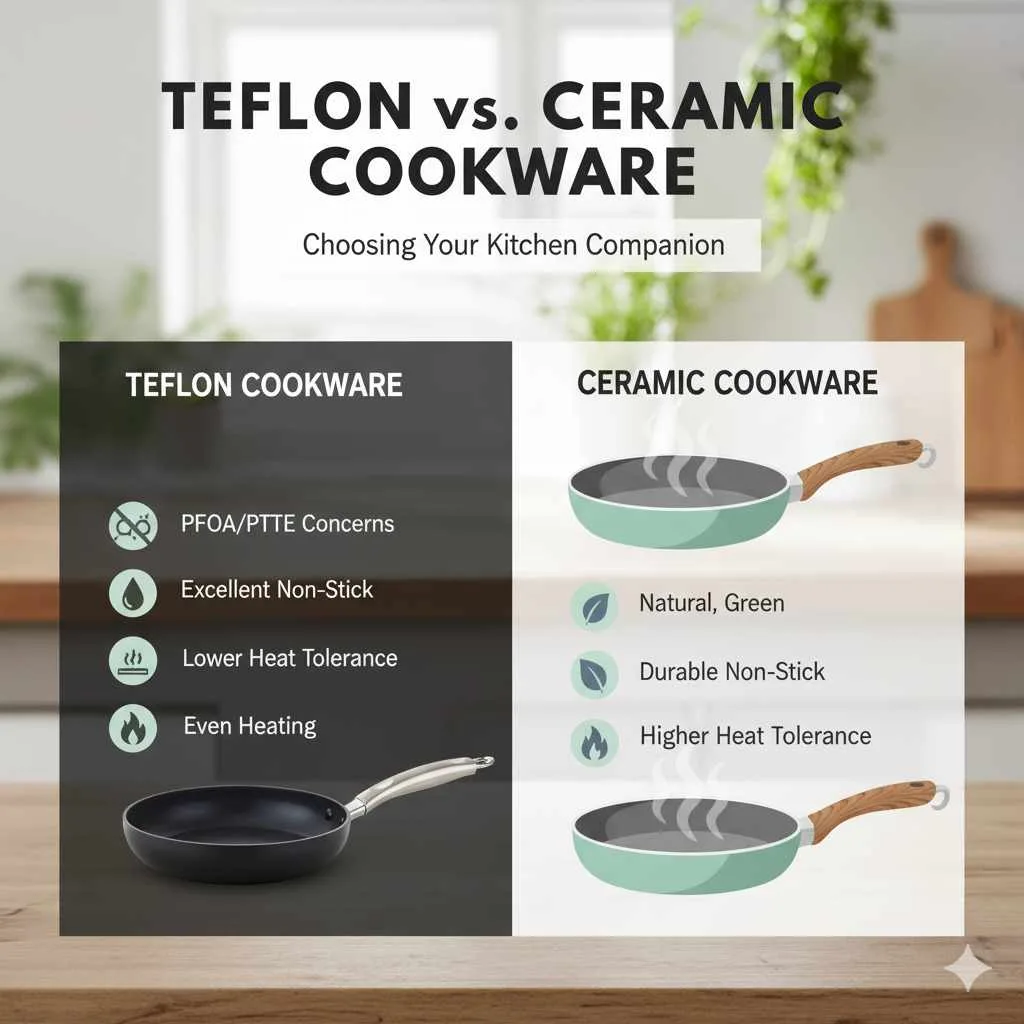
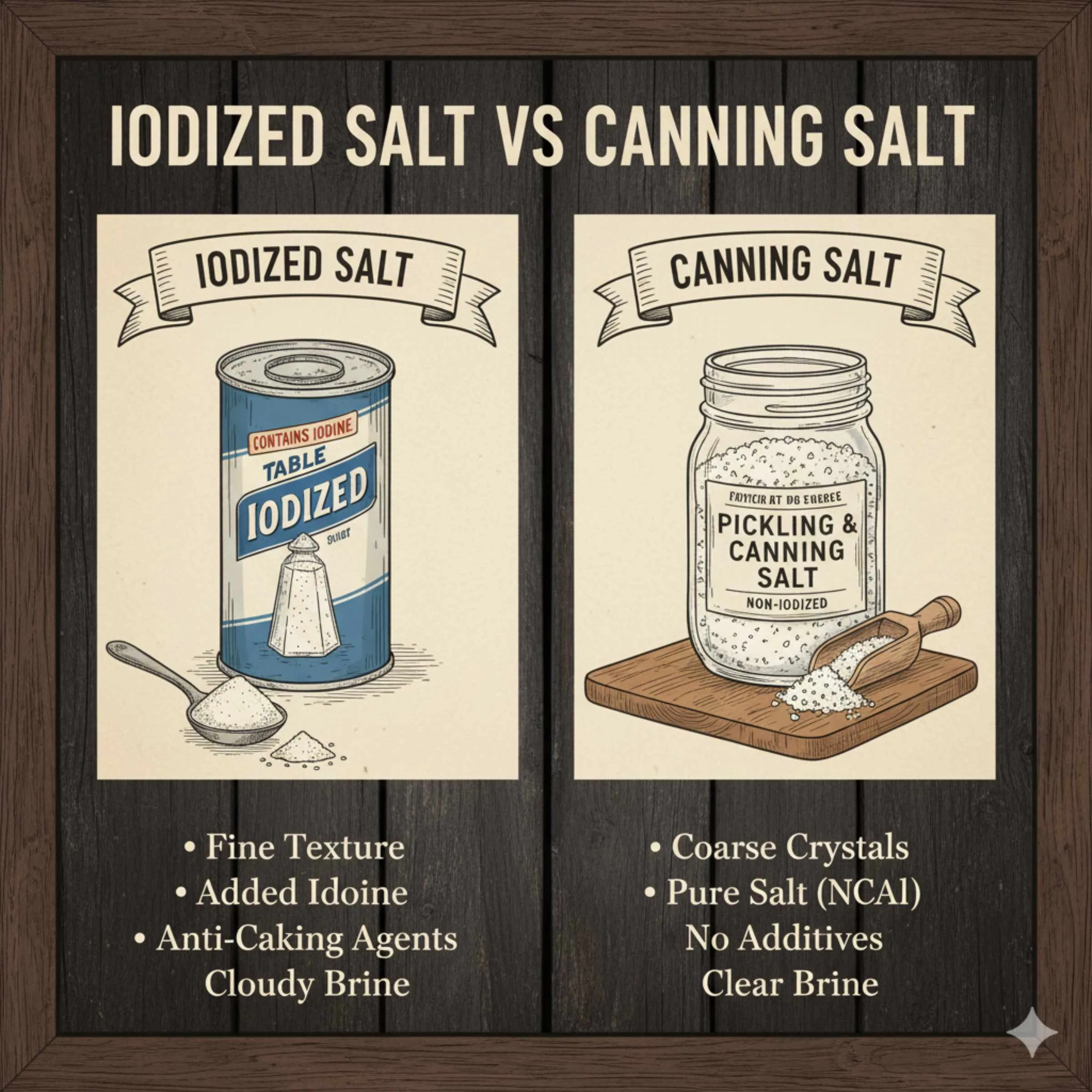
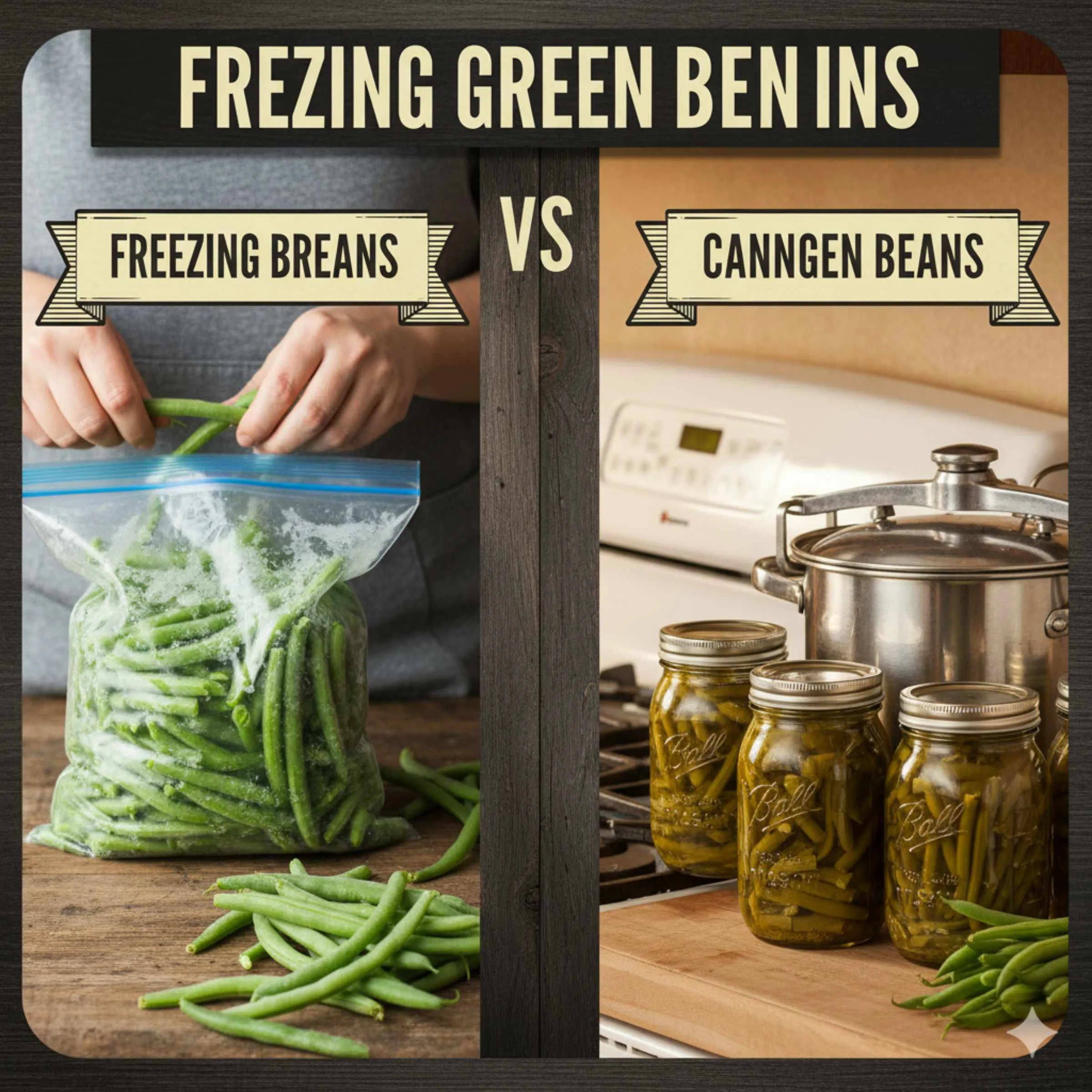


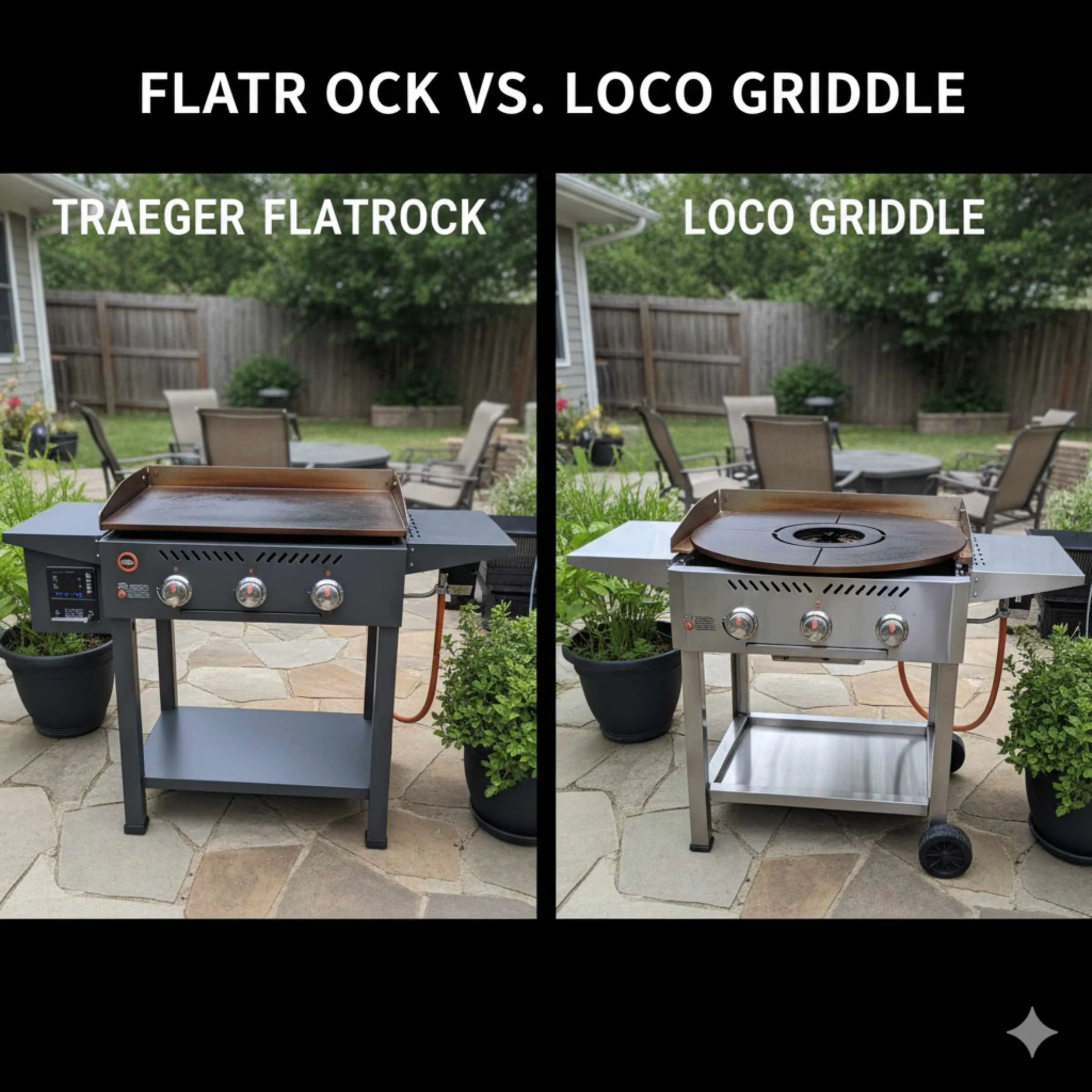

Leave a Reply